Okay, real talk: "Ahsoka," the latest addition to the Star Wars universe, has officially landed on Disney+. Cue the confetti, right? But let's pump the brakes a second. While it's visually stunning and narratively compelling, there's a teeny, tiny hiccup — much of the story leans on you knowing the ins and outs of previous animated series. And with an expansive universe as intricate as a spider's web, it's super easy to get lost amid the who's who and what's what. That's why we're doing you a solid listing of 12 must-watch episodes from "Star Wars: The Clone Wars" that will serve as your Ahsoka Tano 101. This is your gateway to understanding her character and monumental significance to the Star Wars canon. The episodes we've cherry-picked are like the Rosetta Stone for decoding Ahsoka Tano. With a storyline as multi-layered as a Dagobah swamp, "Star Wars: The Clone Wars" weaves complex characters and morally grey narratives that add depth to the Star Wars universe. Trust us, these episodes are your golden ticket to understanding the full spectrum of Ahsoka's role— from her journey as Anakin Skywalker's Padawan to her transformation into a complex, independent force of her own. Whether you've just started sipping the Star Wars Kool-Aid or you've been a die-hard fan since the Millennium Falcon made the Kessel Run, these episodes are your shortcut to grasping the nuances that make Ahsoka a standout character in the galaxy far, far away. Ready to get your Star Wars scholar on? Dive into these episodes, and you'll emerge with an enriched understanding of Ahsoka Tano, her compelling personality, and her seismic impact on the Star Wars universe. So, pull out your lightsabers, gather your courage, and begin the ultimate study session.
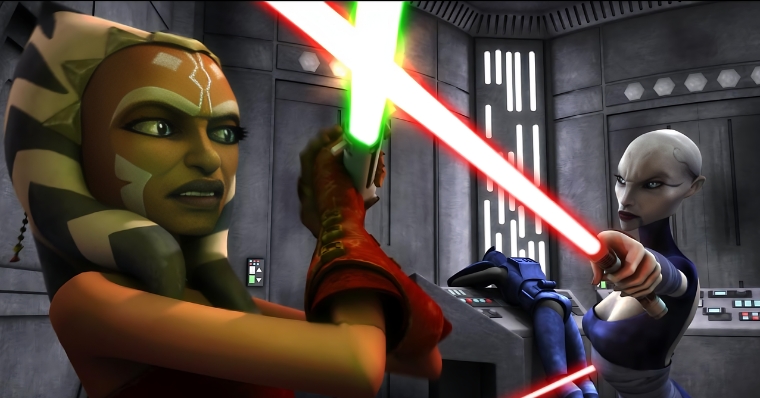
Cloak of Darkness (Season 1, Episode 9)
In the whirlpool of interstellar politics and lightsaber duels that is "Star Wars: The Clone Wars," Season 1, Episode 9, stands out as a turning point for one character who would go on to become a memorable part of the Star Wars mythology: Ahsoka Tano. This episode is entitled "Cloak of Darkness," where Ahsoka encounters Asajj Ventress, one of her most formidable nemeses. The sheer gravity of what happens here sets the stage for a deeper understanding of who Ahsoka really is. Ahsoka teams up with Jedi Master Luminara Unduli. Their mission? To escort the malevolent Viceroy Nute Gunray to Coruscant for trial. It seems straightforward, except that the Sith Lord Count Dooku has other plans. He dispatches his dark apprentice, Ventress, to free Gunray and eliminate the Jedi escorts. Now, we see Ahsoka in all her nuanced glory, flexing her skills and personality traits ranging from witty one-liners to tactical prowess. She doesn't just share screen time with Ventress; she goes saber-to-saber with her, setting the bar high for what she'll bring to the franchise moving forward. Let's add some context for the uninitiated: The Jedi Council has sent Ahsoka and Luminara to transport Gunray, a high-ranking member of the Separatist Alliance, to stand trial for war crimes on Coruscant. Both Jedi believe their escort mission will be a cakewalk, but the Sith are already plotting. Count Dooku, advised by the ever-mysterious Darth Sidious, dispatches Ventress with a twofold mission: liberate Gunray and, if possible, eliminate the Jedi escorts. Time is of the essence; failure is not an option for the Sith this time around. The episode unfolds with tension as thick as Hoth ice. As Ahsoka and Luminara interrogate the slippery Gunray, their ship, the Tranquility, comes under attack. Ventress uses cunning and stealth to infiltrate, laying thermal charges in the engine room while the Jedi are preoccupied with a swarm of enemy droids, and then makes her move on the brig. As Ventress clashes lightsabers with Ahsoka, the young Padawan holds her ground but ends up temporarily imprisoned in Gunray's cell. Luminara arrives just in time, though she underestimates Ventress, a mistake that almost costs her dearly. What's remarkable here is Ahsoka's refusal to follow orders. Against advice from both Luminara and Gree, the clone commander, she acts on her instincts, rushing to assist Luminara and thereby preventing a catastrophe. In a series of betrayals and counterstrikes, Captain Faro Argyus, a Senate Commando who had been guarding Gunray, reveals himself as a turncoat, freeing the Viceroy and attempting to escape. Though Argyus meets his end at the hands of Ventress, the episode concludes on a note of somber introspection: both Ahsoka and Luminara report the unfortunate outcome to their superiors, Jedi Masters Yoda and Anakin Skywalker. It's a moment that will reverberate through the remainder of the series, shaping Ahsoka's development as a character.
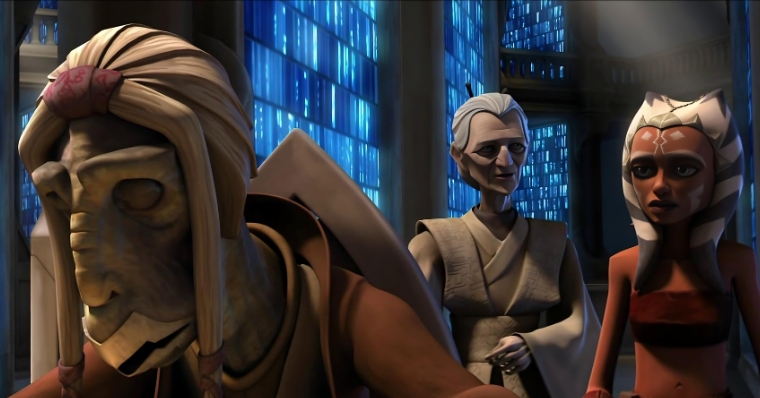
Lightsaber Lost (Season 2, Episode 11)
In "Lightsaber Lost," Ahsoka Tano finds herself in a pickle that's a bit more nuanced than your average "damsel in distress" trope. She's been pickpocketed, and the stolen item isn't just a fancy necklace or a roll of credits; it's her Jedi lightsaber. You know, the weapon that's practically an extension of her own arm? Yeah, that one. To recover her irreplaceable sidearm, Ahsoka teams up with Tera Sinube, a Jedi Master of the Cosian variety (think wise old turtle with a lightsaber). This episode isn't precisely a cornerstone in the grander narrative arc of "The Clone Wars." We don't see seismic shifts in galactic politics or epic battles between the Republic and the Separatists. But it's a quintessential detour that allows us to explore the depths of Ahsoka's character and her ability to navigate challenges—sans Anakin Skywalker and Obi-Wan Kenobi as her proverbial safety nets. Here's where it gets intriguing. At this point in the storyline, Anakin and Ahsoka are deeply entrenched in the seedy underbelly of Coruscant, hot on the trail of a shifty arms dealer. Anakin goes undercover, leaving Ahsoka on the sidelines—a decision that indirectly leads to the theft of her lightsaber. Rather than 'fess up to her Master, Ahsoka pivots and heads for the Archives in the Jedi Temple, not merely to look up some ancient proverb about loss but to seek help from Tera Sinube, a Jedi well-versed in the galaxy's dark and grimy corners. Sinube doesn't just identify the Bannamu crook in a database and send Ahsoka on her way. Nope, he insists on tagging along, and his systematic approach is the perfect counterbalance to Ahsoka's impulsive tendencies. It's a deep dive into the tumultuous world of Coruscant's underworld, complete with dodgy hostels named Spider Arms and slippery characters who've done more than just cross paths with the law. The hunt takes them on a whirlwind tour of deceit and danger. From realizing Bannamu has resold the weapon to an assassin named Nack Movers to finding that Movers has been killed, every twist just thickens the plot. Their investigation even unveils Ione Marcy, a character who tries to pull off the damsel-in-distress act but is caught in her web of deceit. Fast forward to a rooftop chase that could rival anything from an action movie: Cassie Cryar, the real thief, wielding Ahsoka's lightsaber and defying gravity across the cityscape. This chase is more than a quest to retrieve a weapon; it's a physical manifestation of Ahsoka grappling with her impulsive nature, reflecting the inner balance she's trying to achieve. Sinube isn't just there for the ride, either. While Ahsoka chases Cassie, he pieces together the inconsistencies in their stories and sniffs out that Ione was an accomplice. Using a subtle tracking device, he helps corner her, allowing the authorities to step in. Finally, the climactic showdown unfolds atop a train. Ahsoka, unarmed and relying on her wits, takes on Cassie, who's armed with Ahsoka's own lightsaber. The battle reaches its crescendo as the train pulls into the station where Sinube, proving he's still got some quick reflexes, disarms Cassie and helps Ahsoka reclaim her stolen weapon. As the episode winds down, Ahsoka is presented with an opportunity to reflect on her journey—a lesson in patience and responsibility, themes that resonate with Jedi younglings and, quite honestly, with us as viewers. Master Yoda welcomes them back, inviting Ahsoka to share her wisdom. It's a valuable lesson wrapped up in a narrative that's as thrilling as it is insightful.
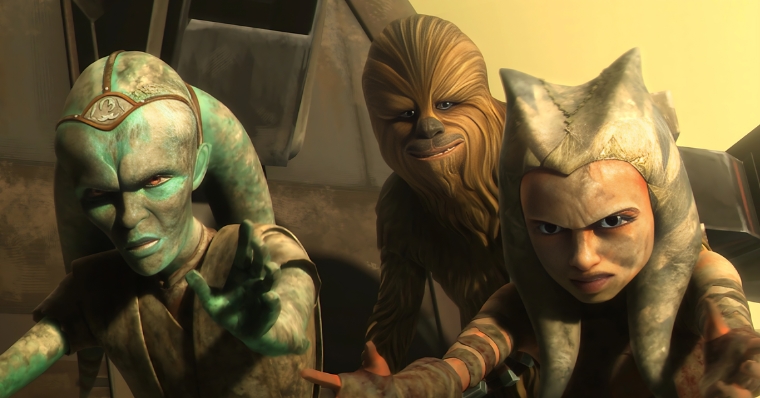
Wookiee Hunt (Season 3, Episode 22)
In "Wookiee Hunt," the 22nd episode of Season 3, we venture into one of the most essential episodes of "Star Wars: The Clone Wars" to get a deeper look at Ahsoka. This episode isn't just your average romp in a galaxy far, far away; it's the thrilling second part of an arc that pits our fearless Padawan Ahsoka and a group of young Jedi initiates, affectionately called younglings, against a posse of ruthless bounty hunters. When you think they're backed into a corner, a familiar and furry face comes—none other than the legendary Wookiee, Chewbacca. While it's easy to pigeonhole Ahsoka as a sidekick to heavy hitters like Anakin Skywalker, Obi-Wan Kenobi, and even Padmé Amidala, episodes like "Wookiee Hunt" serve as powerful reminders. They highlight Ahsoka's agency and seamless integration into the larger Star Wars tapestry, proving she's not just filler material but a cornerstone of this universe. Now, let's dig a bit into the nitty-gritty, shall we? Ahsoka and younglings Jinx and O-Mer run from relentless Trandoshan sport hunters. With the tragic death of their youngling leader, Kalifa, the stakes are higher than ever. Undeterred by their dire circumstances, Ahsoka rallies her disheartened crew with a daring plan. Their mission: to intercept a dropship bringing in fresh prisoners, including a certain Mr. Chewbacca. You heard it—our beloved Wookiee is part of the cargo, and his appearance is like a shot of adrenaline to the story. In a covert operation soaked in morning mist, the Jedi operatives barely manage to board the ship. In an intense sequence, they subdue one pilot, but not without causing some technical snafus that force them to abandon the mission. But not before releasing Chewbacca, who proposes an interesting solution. If they can get to the ship's wreckage, they might be able to build a transmitter to call for help from his homeworld, Kashyyyk. Under the shroud of night, the group sneaks back, going past patrolling snipers and, thanks to Chewbacca's mechanical genius, building their transmitter. But that isn't the end. A hair-raising, pulse-quickening battle ensues, with Wookiee reinforcements arriving in the proverbial eleventh hour, led by General Tarfful. All culminates in a face-off between Ahsoka and Garnac, the vengeful Trandoshan leader, high on emotion and dramatic tension. After returning to the Jedi Temple on Coruscant, there's a sense of gratitude and newfound respect between Ahsoka and Anakin. It's a relationship beyond mere mentor and protegé; they've both saved each other in more ways than one. Master Yoda, ever the observant one, can't help but flash one of those sage-like smiles. "Wookiee Hunt" is not just a high-octane, action-packed adventure. It's a nuanced look at Ahsoka's evolution, a character study draped in lasers, Wookiee roars, and the aura of the Force.
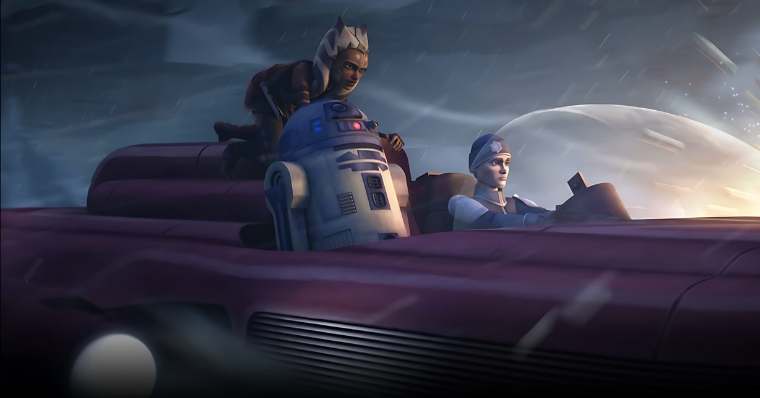
A Friend in Need (Season 4, Episode 14)
The world of "Star Wars: The Clone Wars" isn't merely a space opera brimming with lightsabers and epic battles; it's also a poignant reflection on the political turmoil that constantly unsettles the galaxy far, far away. Every escapade that involves the Jedi isn't just about waving around a plasma sword; it's a carefully choreographed dance with diplomatic consequences echoing throughout the universe. Case in point: the Season 4 episode "A Friend in Need." This episode teems with substance, offering viewers a heady mix of interpersonal dynamics and galactic politics. We're on Mandalore, neutral ground, where the Republic and the Separatists attempt a peace conference. The setting is Duchess Satine's lavishly designed throne room, imbued with all the gravitas you'd expect for such a momentous occasion. Enter Lux Bonteri, a young man teeming with righteous indignation, who grinds the entire diplomatic event to a halt. Lux, son of a late Separatist senator, accuses Count Dooku of cold-blooded murder—specifically, the killing of his mother. Who wouldn't be all ears at this point, right? The commando droids hustle him out of the room, but not before Ahsoka Tano decides that this is a guy worth helping. But why does Ahsoka make this choice? Because, for her, it's a matter of principle. She sees injustice in Lux's treatment, and she feels compelled to act—even if it involves a dangerous game of cat and mouse that starts aboard a Separatist ship and leads to the rugged terrain of Carlac. It's Ahsoka at her best, leaning into her moral compass, which often puts her at odds with the established norms of the Jedi Order and the Republic. The stakes skyrocket when we arrive at Carlac. Here, we meet the infamous Death Watch—a group of Mandalorian warriors known for their less-than-savory reputation. Lux believes he's found allies in his quest for vengeance against Count Dooku, but Ahsoka knows better. She tries to warn Lux, but not before she's forced to improvise, claiming she's his betrothed to avoid raising suspicions. As they venture deeper into the Death Watch camp, Ahsoka makes a startling discovery. She sees the warriors firing at innocent, crudely designed droids, which makes her question the morality of Lux's newfound companions. And then comes Pre Vizsla, the ominous leader of the Death Watch, ramping up the tension another notch. All this culminates in a confrontation where Ahsoka must make hard choices that could either save lives or jeopardize her mission. It's a defining moment that offers her a complex, multifaceted dilemma: how far should one go to uphold their ideals, especially when they clash with those of the people you're trying to help? A blend of tension, action, and ethical dilemmas, "A Friend in Need" is an episode that pushes the narrative envelope, unraveling the complexities of Ahsoka Tano. It allows her to grow, not just as a Jedi but also as a person, forced to navigate a murky moral landscape. The episode is a microcosm of the more prominent themes in "Star Wars: The Clone Wars," expertly encapsulating the uneasy alliance between politics and morality in a galaxy embroiled in endless conflict.
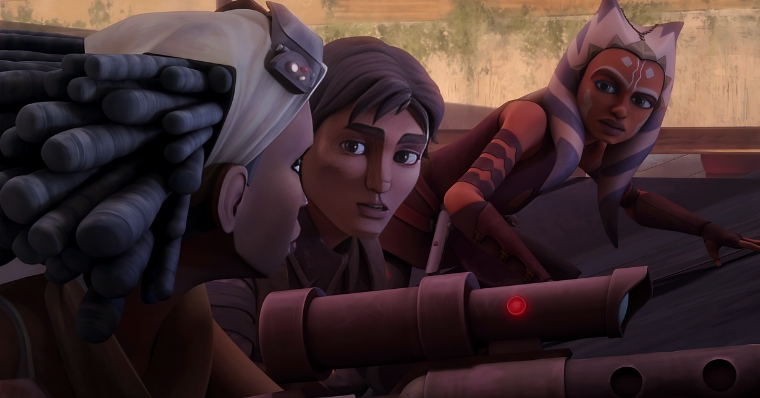
Front Runners (Season 5, Episode 3)
Step aside, heated debates over midi-chlorian counts and lightsaber colors! "Star Wars: The Clone Wars" isn't just an arena for dueling opinions; it's a pulsating canvas of storytelling, packed with action-filled episodes that serve more than just your usual galactic fireworks. Take, for instance, "Front Runners," the episode where the Onderon rebels join forces with Ahsoka Tano to infiltrate Iziz, the capital city, and unleash a series of well-coordinated strikes that reverberate through the concrete jungle. The depth it adds to Ahsoka's character makes this episode an unmissable tour de force. Here's an Ahsoka who has grown exponentially since we first met her, one who understands her role as a Padawan but never downplays the monumental impact she can have on the galaxy's fate. Armed with tactical brilliance and an uncanny ability to lead, this episode establishes Ahsoka as not just a sidekick to the Jedi but as a monumental figure in her own right. Now, let's talk details. Officially, the storyline reads like this: Supervised by Ahsoka, the Onderon rebels disrupt the status quo in the city, striking various targets and causing the Separatist-backed king to sweat bullets. It's a high-stakes game culminating in the rebels choosing a new leader. But, ahem, that's just scratching the surface! In the broader scheme of things, this episode is like a chess match orchestrated on multiple levels. Jedi, including Anakin Skywalker, Obi-Wan Kenobi, and Ahsoka, have been training a group of rebels to fight back against the Separatist forces on Onderon. It's a David vs. Goliath situation, but thanks to the Jedi tutelage, our rebels have been slipping through the cracks and carrying out daring attacks on the Separatist droids. Sanjay Rash, the puppet king of Onderon, feels the heat and starts pointing fingers. He drags Ramsis Dendup, the deposed former king, out of the dungeons and blames him for the chaos. Meanwhile, our heroes are contemplating their next moves in a clandestine safehouse. There's tension, uncertainty, and the urgency to win over the people who are understandably wary of their rebel saviors. To seal the deal, the rebels, under Lux Bonteri's tactical counsel, decide to hit the city's power station—basically, the droid recharging hub—thereby delivering a knockout punch to the occupying forces. Sure, the mission doesn't go off without a hitch. As they navigate the operation, there's some inter-rebel tension, particularly between Lux and Steela Gerrera. And then, Ahsoka, our ever-vigilant supervisor and advisor, grapples with a personal dilemma as she senses the budding attraction between Lux and Steela. But amid these emotional intricacies, the rebels manage to pull off their mission, turning the lights out on the droids and lighting up the hearts and minds of Onderon's citizens. As they revel in their newly won adulation, a holographic Anakin and Obi-Wan appear to remind everyone that the path ahead is fraught with dangers, notably from a vengeful Count Dooku. It's a wake-up call and a poignant moment where the heroes, now led by the unanimously elected Steela, find purpose and clarity in their struggle.
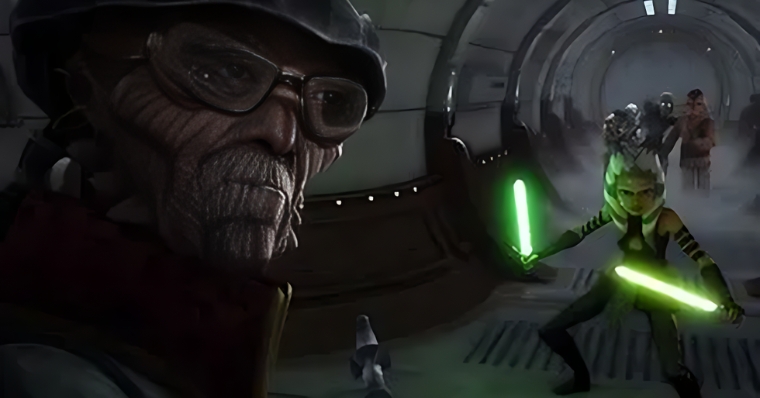
A Test of Strength (Season 5, Episode 7)
"A Test of Strength" propels us into a thrilling and emotion-drenched story that gives viewers a detailed look into the heart and spirit of Ahsoka Tano as she takes on the role of mentor to a batch of Jedi younglings. In this narrative crucible, she and the young Jedi initiates find themselves on the same side, albeit from different generational viewpoints. The episode is the second installment of a four-part arc and serves as a lens through which to observe the symbolic journey of crafting lightsabers, those iconic energy swords of the Jedi Order. Now, it's not all mystical Jedi lessons and crystal harvesting. The stakes are ratcheted up when our heroes come under attack by Hondo Ohnaka's gang of spacefaring marauders. This is where Ahsoka and her youthful charges must demonstrate their grit and team up to tackle this sticky situation. It's a masterclass in collaboration, as the young and the not-so-young Jedi must harmonize their skills to weather this storm. Adding another layer of allure to the episode is the inclusion of actor David Tennant, who breathes life into Huyang. This ancient droid, an expert in the arcane arts of lightsaber construction, is pivotal in this particular episode and reappears in the spin-off series "Ahsoka." His wisdom and no-nonsense teaching methods make him unforgettable in the Star Wars universe. The journey for these younglings starts as a traditional rite of passage. Under the guidance of Ahsoka, they have been to Ilum, where they faced their fears and secured Kyber crystals for their future lightsabers. But just when they think it's smooth sailing back to Coruscant, they get intercepted by Hondo's gang, who see dollar signs in those precious crystals. The real action begins with their cruiser's engines temporarily out of commission. Huyang instructs the younglings to surrender their crystals, which they do—except for Petro, who pulls a clever ruse. Ahsoka then orchestrates an intricate escape, utilizing the ship's ventilation systems and forming mini-teams with different responsibilities to regain control of the cruiser. Despite their limited experience, the younglings get innovative and use lightsaber-training drones to stall their attackers. It's guerrilla warfare meets Jedi training with a sprinkle of ingenuity. And just when it seems the younglings and Huyang have been cornered, Ahsoka swoops in, engaging in a lightsaber duel with the pirates and providing the crucial window for everyone to escape to safety. However, as they near victory, Ahsoka herself is captured by Hondo, adding a dark cliffhanger that sets the stage for the next episode. To summarize, "A Test of Strength" delivers an action-packed installment and a rich, complex narrative that deepens our understanding of Ahsoka and the trials she faces as a mentor. Moreover, it underscores the timeless lessons of teamwork, bravery, and the balance between the old and the new, all while fortifying its place as an essential episode in the greater "Star Wars: The Clone Wars" storyline.
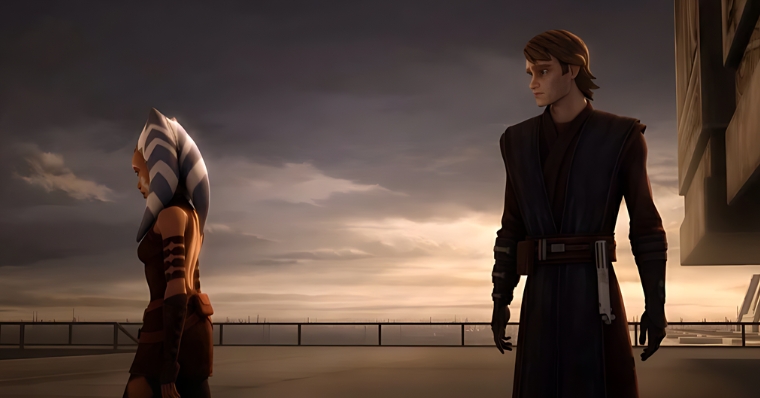
To Catch a Jedi and The Wrong Jedi (Season 5, Episodes 19 and 20)
These two episodes from Season 5 of "Star Wars: The Clone Wars" are pivotal when understanding the complex journey of Ahsoka Tano. They present a tale that's as heartbreaking as it is transformative. Here's why they're a must-watch: In these episodes, Ahsoka finds herself on the bitter end of a terrible accusation—being blamed for a gruesome crime she didn't commit. Mind you, this isn't just any crime but one that could spell the end of her future as a Jedi. To get to the bottom of the twisted narrative she's suddenly entangled in, Ahsoka forms uneasy alliances, even teaming up with characters like Asajj Ventress, a former Sith assassin. She also finds herself at odds with people she had once considered friends—most notably, her own Jedi Master, Anakin Skywalker. What's genuinely gut-wrenching here is witnessing the degradation of Ahsoka's belief in the Jedi Order. Until now, she's been fiercely loyal to her Master and unflinchingly faithful to the Jedi Council's principles. Yet, this is the first time the Council lets her down—a betrayal catalyzed by a set-up she had no hand in. And let's not forget Anakin. This arc is a crucial footnote in his transformation into Darth Vader. He's forced to confront his insecurities and mistrust of the Jedi Council, further deepening the cracks in his identity as a Jedi Knight. He and Ahsoka emerge from this experience with their faith in the Jedi Order irrevocably altered. It's as if this harrowing event casts a long shadow over their future, setting the stage for the tragedies that will eventually befall them both. Moreover, these episodes delve into the broader theme of systemic failure. The Jedi Council, meant to be a paragon of justice, fails one of its own, making us question its role as the moral compass of the galaxy. Their decisions concerning Ahsoka have implications that ripple far beyond just one Padawan—they echo the flaws within the entire Jedi system. After a rollercoaster of events, Ahsoka's name is eventually cleared, but the damage is done. The Jedi Council offers her the chance to return, implying that this traumatic experience was, in fact, her "great trial." But in a moment that leaves everyone stunned, Ahsoka chooses to walk away. She leaves the Temple, burdened with the hard-earned wisdom that trust is fragile—easily broken yet painfully challenging to rebuild. Her decision impacts her future and leaves Anakin grappling with his feelings of failure and desertion, which will continue to plague him as he walks his path toward destiny. So, if you're keen on understanding the nuances and the emotional gravitas of Ahsoka Tano's journey, you cannot afford to skip these episodes. They offer a crucial lens into the complex world of "Star Wars: The Clone Wars," where heroes and institutions are made and unmade, often in the blink of an eye.
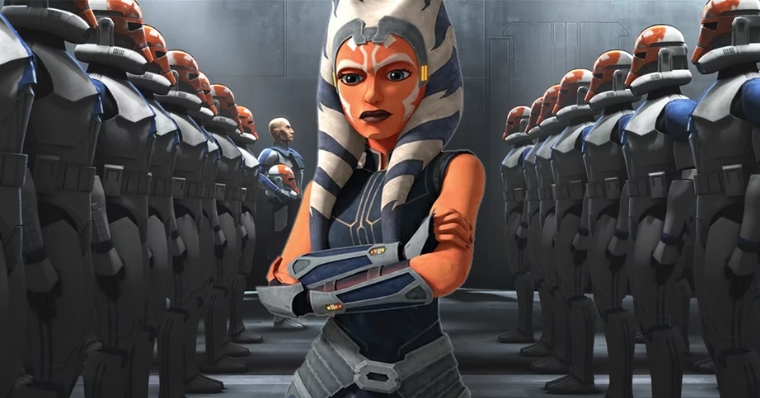
The Siege of Mandalore Arc (Season 7, Episodes 9 to 12)
The Siege of Mandalore Arc, spanning the last four episodes of the seventh season of "Star Wars: The Clone Wars," serves as an indelible keystone to understanding the layered persona of Ahsoka Tano. This arc is nothing less than a visual symphony, capturing the zeitgeist of an era sliding into chaos while emphasizing Ahsoka's evolving role in it. Here, Ahsoka, the former Padawan, gets reacquainted with her erstwhile Master in a reunion tinged with nostalgia and upcoming doom. Yet, this reunion isn't about sipping tea and reminiscing about the good ol' days. Ahsoka has discovered alarming intel about Darth Maul's schemes in Mandalore. Consequently, she reconnects with Obi-Wan Kenobi and Anakin Skywalker, who are embroiled in their war efforts, and decides to undertake one last dangerous mission for the Republic. These episodes epitomize Ahsoka's narrative, showcasing her unparalleled leadership qualities as she steps into the Jedi-sized void leading a clone battalion. She commands her troops with the assurance of a seasoned general, subtly questioning the Jedi Council's judgment in not recognizing her value. Ahsoka is shown as an indispensable asset, radiating a calm resolve, which makes us wonder—what could have been had the Council not been myopic? Even if Ahsoka's potent storytelling and evolution aren't compelling enough to make you tune in, this arc offers a luscious treat: one of the most intense showdowns in the franchise's lore—Ahsoka vs. Darth Maul. Their duel isn't just another lightsaber fest; it's an electrifying ballet of ideals and ambitions, a skirmish of wills beyond just the clash of plasma blades. If you've ever craved an Ahsoka Tano feature, congratulations; this arc is essentially a standalone movie that doubles as the best Darth Maul narrative to date . In a poetic twist, once apprentices are betrayed by their mentors, these two characters meet in a battle charged with equal parts desperation and hope. While across the galaxy, Anakin, pre-Vader, is falling deeper into the intricate trap set by Chancellor Palpatine, these two are embroiled in their own internal and external conflicts, facing the limitations of their agency in the face of overwhelming cosmic odds. The episode "Shattered" marks the dreaded moment: Anakin's fall and the unleashing of Order 66. As we witness the agonizing events, the emotional impact is intensified by our deep connection to Ahsoka and Clone Commander Rex. Their friendship, forged through countless battles, is put to the ultimate test. Watching Rex struggle against his ingrained programming to terminate Ahsoka is heart-wrenching, making the arc more emotionally complex and tragic than ever before. By the time we reach "Victory and Death," the concluding episode, the focus has narrowed to a painful simplicity: survival. It's no longer about winning the war; that ship has long sailed. Ahsoka and Rex face their destiny not with grandeur but with a subdued, tragic dignity. Their choices are aligned with the essence of their characters—Ahsoka's ethical fortitude refuses to take the lives of the clones, and Rex's loyalty is demonstrated in a final act of defiance against his programming. The episode winds down to its inevitable conclusion, leaving us with a field of fallen helmets, each bearing the colors in homage to Ahsoka. The scene where Darth Vader picks up his former Padawan's lightsaber is a somber bookend to the arc, a tacit acknowledgment of the paths not taken, the words left unsaid, and the relationships fractured beyond repair. Essentially, "The Siege of Mandalore" is a high-stakes rollercoaster ride through the labyrinth of choices, alliances, betrayals, and personal reckonings. It is a resounding conclusion to "Star Wars: The Clone Wars" and a preamble to the following dark era. It makes it an essential narrative for anyone invested in the Star Wars universe or well-told stories.









